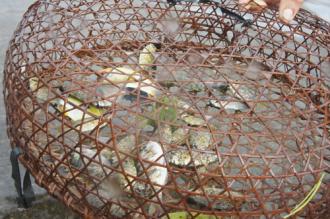Many things can create one, ...
Many things can create one, it can be of any shape or size, it is created for various reasons, and it can shrink or grow with time. What is it?Correct answers: 34
The first user who solved this task is Chandu Rajyaguru.
#brainteasers #riddles

Fish trap
This fisherman goes to the river to check an illegal fish trap that he owns. He looks around to make sure there are no Fishing Inspectors about and proceeds to pull the fish trap out to check it.
An Inspector steps out of the bushes, “Ahha!” he said and the fisherman spun around and yelled “Shiiiit!”. The Inspector, who wasn’t expecting such a response said “Settle down, I’m the Fishing Inspector”.
“Thank God for that” said the fisherman, “I thought you were the bugger who owned this fish trap”.

